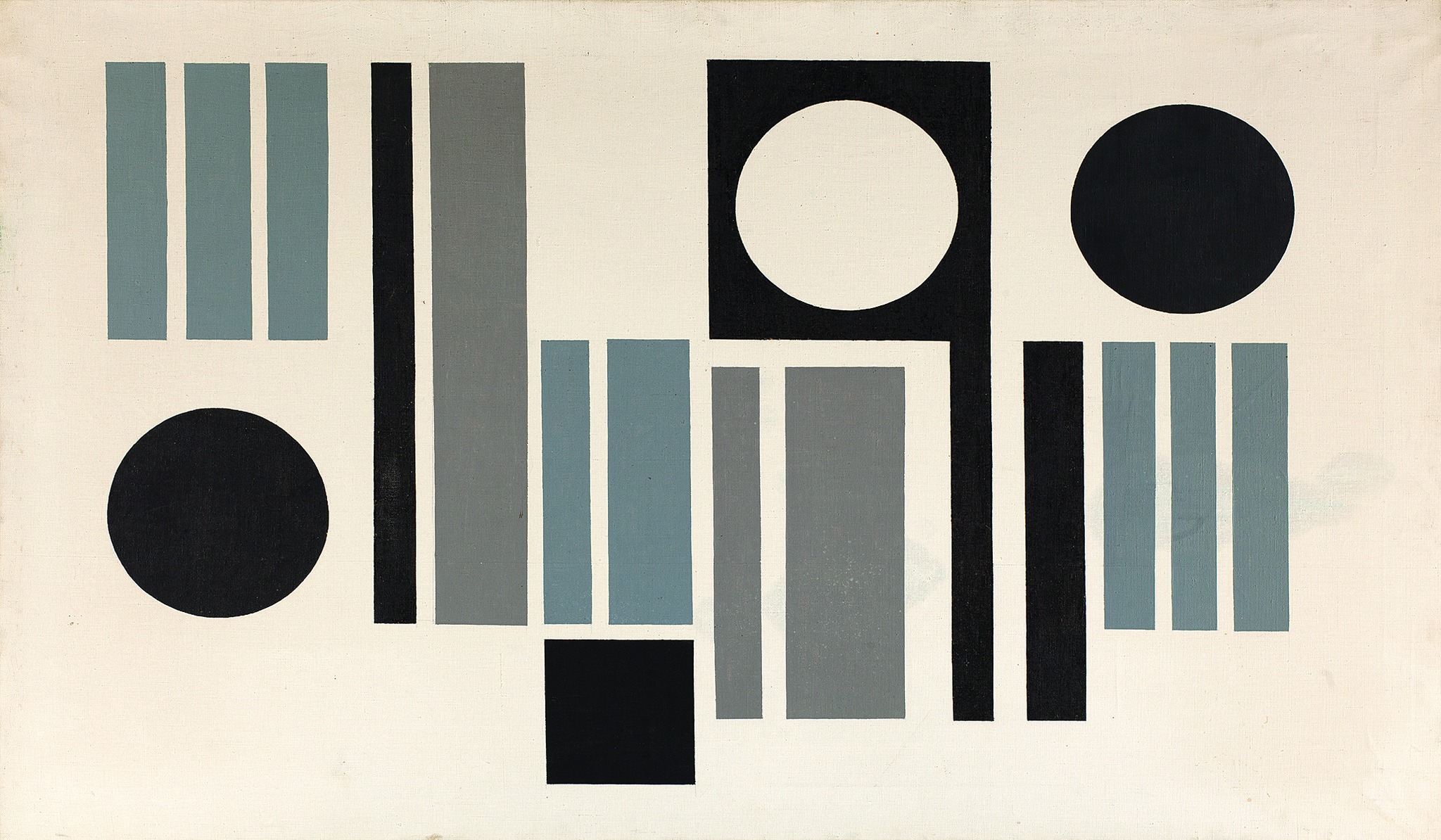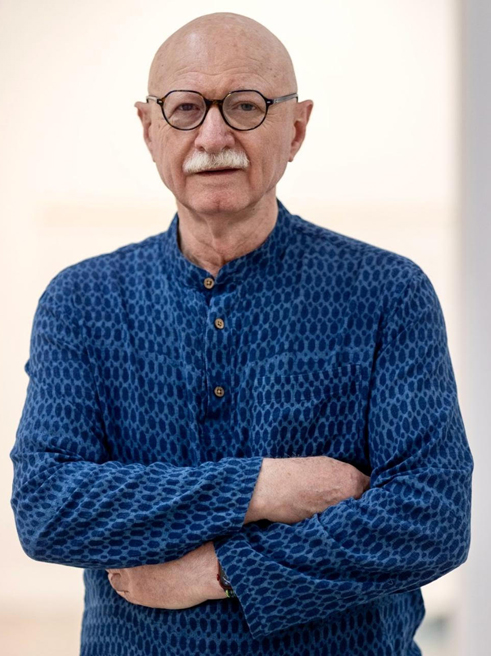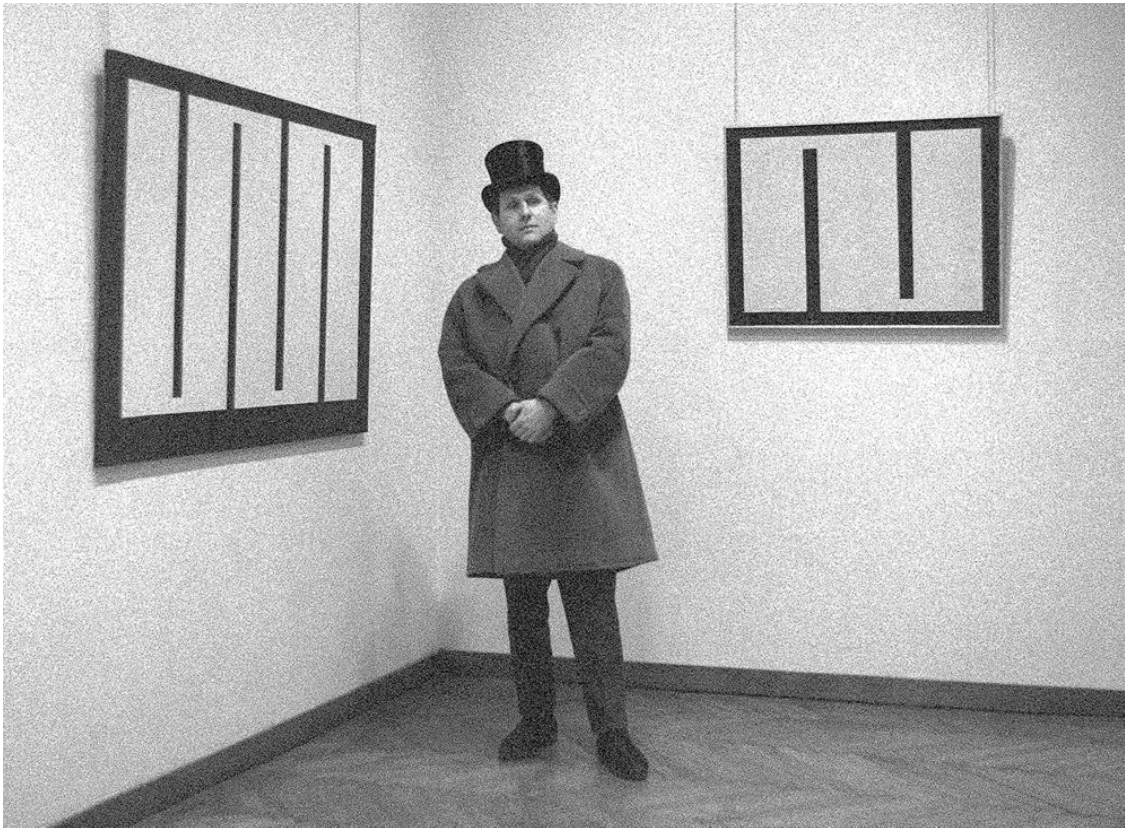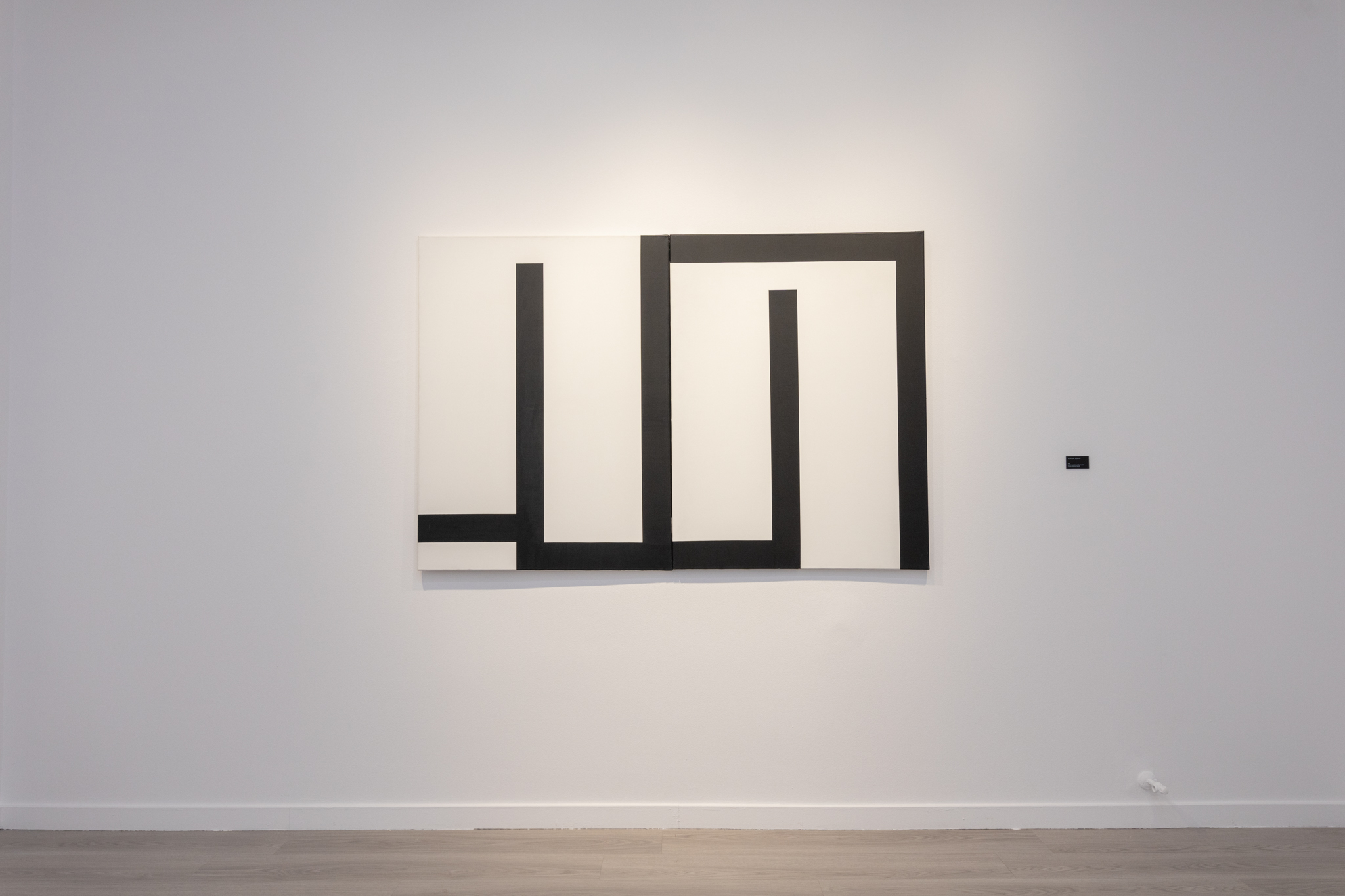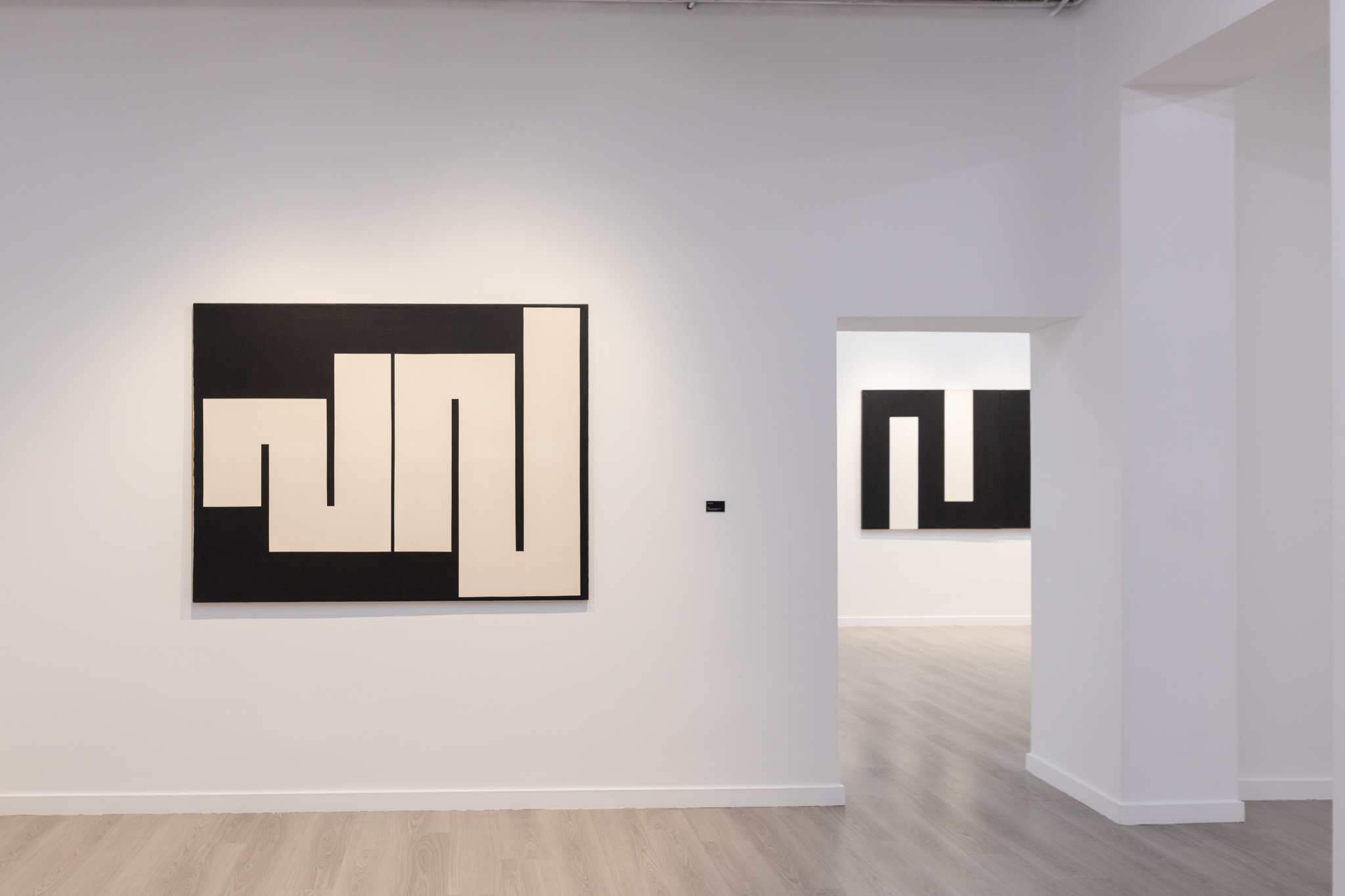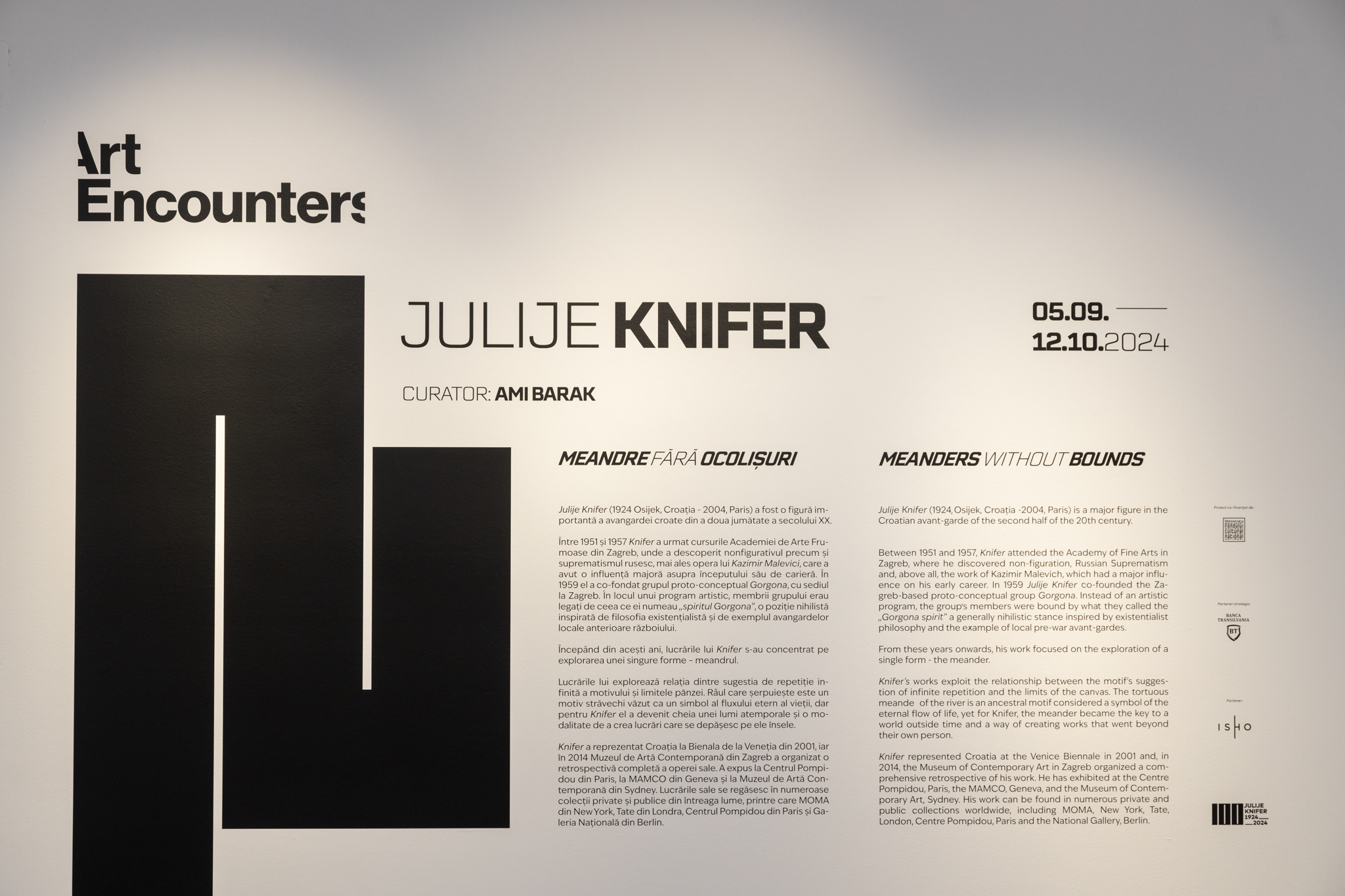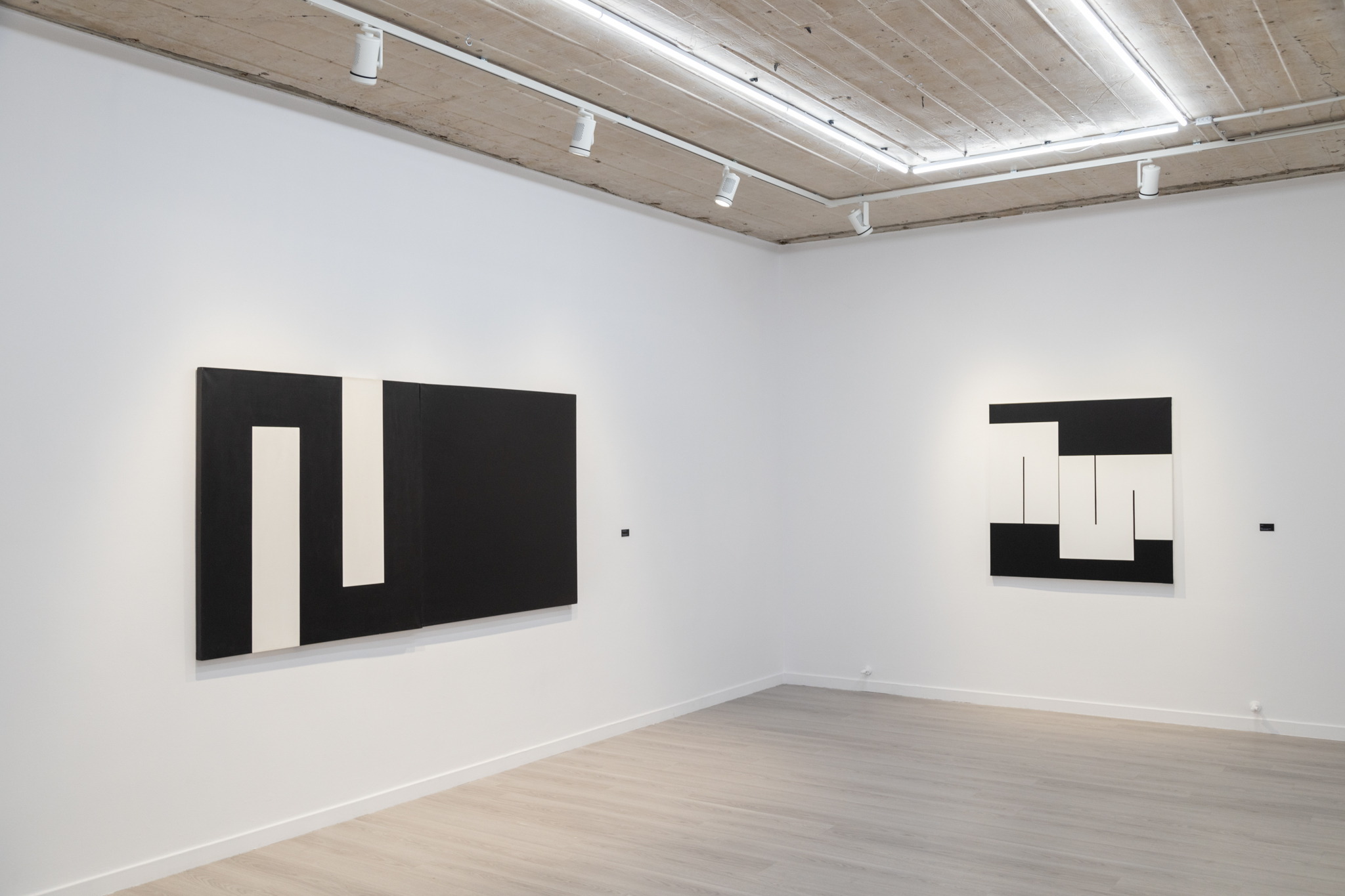Julije Knifer (1924 – 2004, b. Croatia) is one of the key personalities of the Croatian avant-garde in the second half of the 20th century. Working in Yugoslavia, and later in Paris, France, in the 1990s, Knifer’s work centred on the exploration of a single form – the meander – which over the years has become the central element of his artistic production. The artist arrived at the meander because he wanted to reach the essential by renouncing all superfluous elements. His works explore the relationship between the suggestion of infinite repetition of the motif and the limits of the canvas. The meandering river is an ancient motif seen as a symbol of the eternal flow of life, but for Knifer it has become the key to a timeless world and a way to create works that transcend themselves. His meanderings reflect an ongoing exploration of the concept of art freed from traditional constraints, offering viewers a unique experience of introspection and reflection.
Through this repetitive motif, he explored themes of eternity, repetition and structure, creating a work of art that transcends time and space. The meandering motif in his work reflects an ongoing search for order amidst chaos and simplicity amidst complexity, offering the viewer a profound perspective on art and life. During his career, Knifer was one of the founding members of the Zagreb-based proto-conceptual group Gorgona (1959 – 1966). Instead of an artistic programme, the members of the group were bound by what they called the ‘Gorgona spirit’, a nihilistic stance inspired by existentialist philosophy and the example of the local pre-war avant-garde.
Born in Osijek, Croatia, in 1924 and deceased in Paris in 2004, Julije Knifer represented Croatia at the 2001 Venice Biennale and gained international renown, with his work exhibited in prestigious institutions such as the Centre Pompidou in Paris, MAMCO in Geneva and the Museum of Contemporary Art in Sydney. His works can also be found in private and museum collections around the world, including MoMA in New York, Tate in London and the National Gallery in Berlin. In 2014 the Museum of Contemporary Art in Zagreb organised a comprehensive retrospective of his work.
